Mastering BUILD - the 5 steps in more detail
Consider a simple situation you may have experienced. You have just seen your colleague Simon leave his dirty plates in the team room and rush off without washing them...
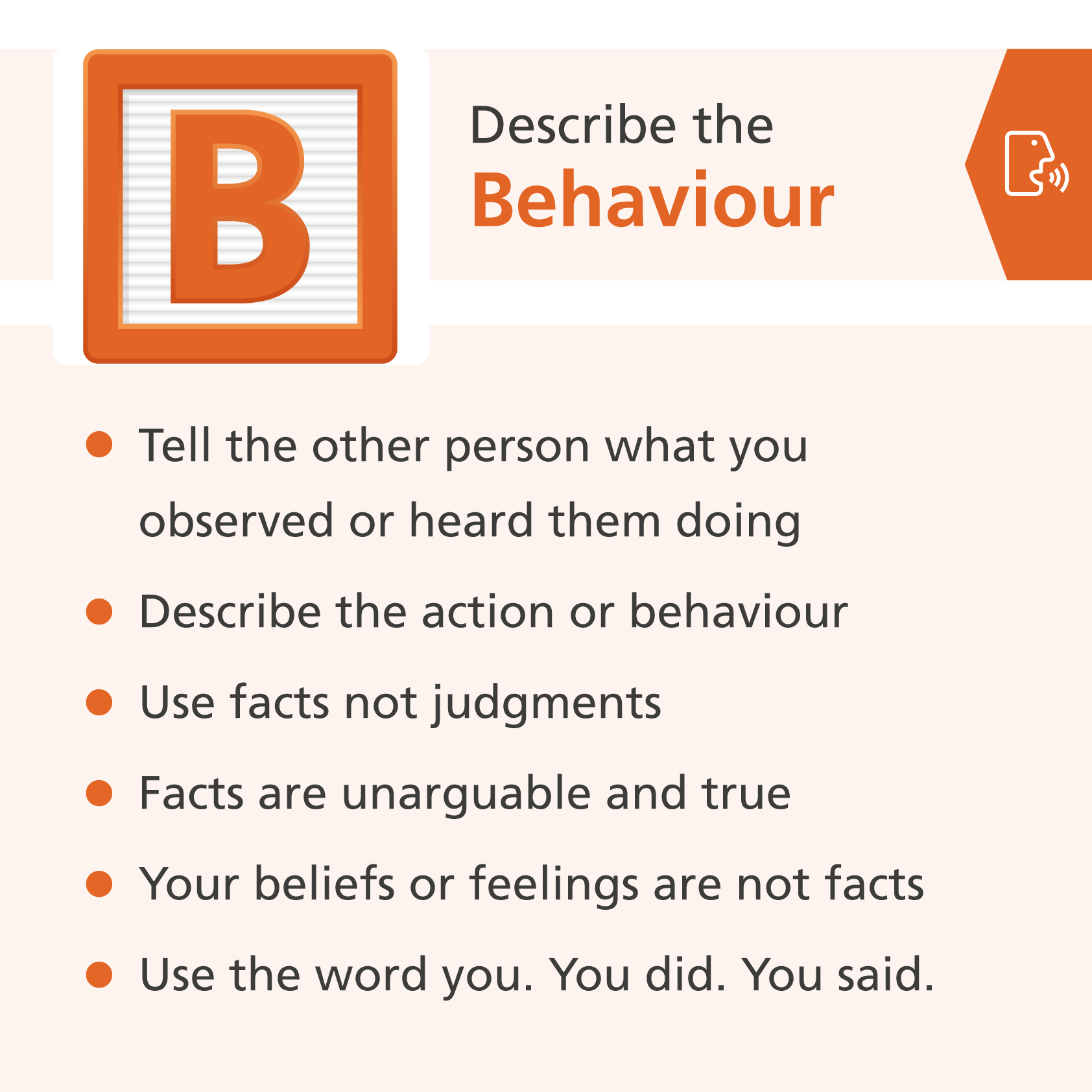
B. Behaviour
In describing behaviours, facts work much better than judgments. The difference between them may seem obvious on the surface. Looking closer, statements that appear factual are really beliefs or feelings.
“Simon, you have left the kitchen in a mess” is a judgment not a fact. Simon may have a different view on what is a ‘mess’. If I tell Simon it’s a mess he may disagree and we may argue.
“Simon, you are such an untidy person” is a belief not a fact. It’s making a judgment about his personality. Unsurprisingly when we make judgments, people feel judged and it can lead to poor conversations.
A factual description could be: “Simon, I noticed you left dirty plates in the sink”. It is true and unarguable.
Describing the behaviour factually sets you up for a successful BUILD conversation.
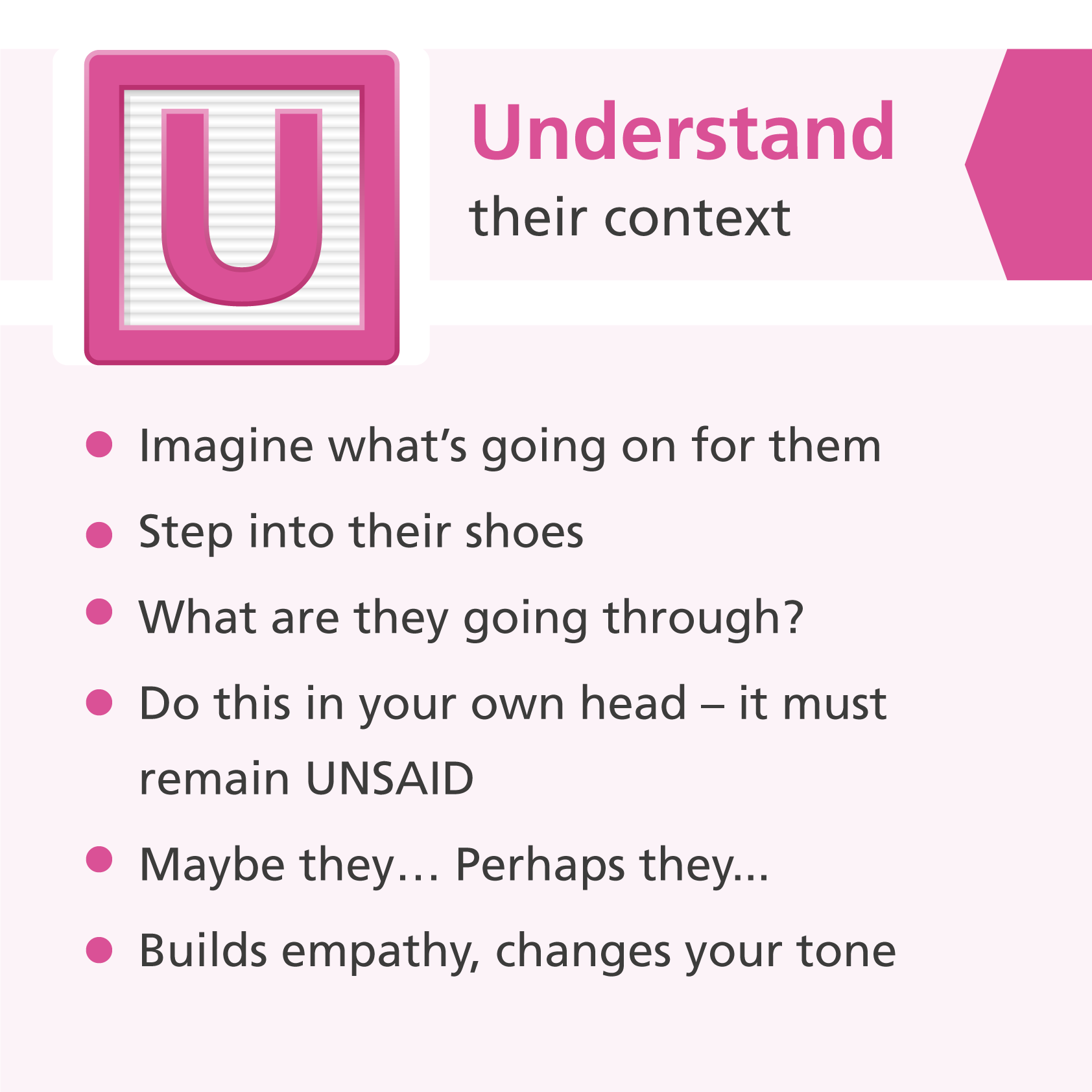
U. (Understand)
Understanding others’ perspectives makes it easier to give feedback. We don’t need to say anything, that’s why it’s in brackets. We need to step into their shoes to think for a moment what might be going on for them. It helps us be more understanding and builds empathy.
For example: (Thinks) “Hmmm, maybe Simon was called away to an emergency.”
Other People’s Shoes (OPS), a simple technique developed by psychologist Edward De Bono asks that you appreciate what might be going on for other people. There may be something going on in their personal life, or they may be under pressure. You may not be right (and this is why it’s unsaid) but the simple act of consideration is proven to significantly reduce conflict in the workplace.
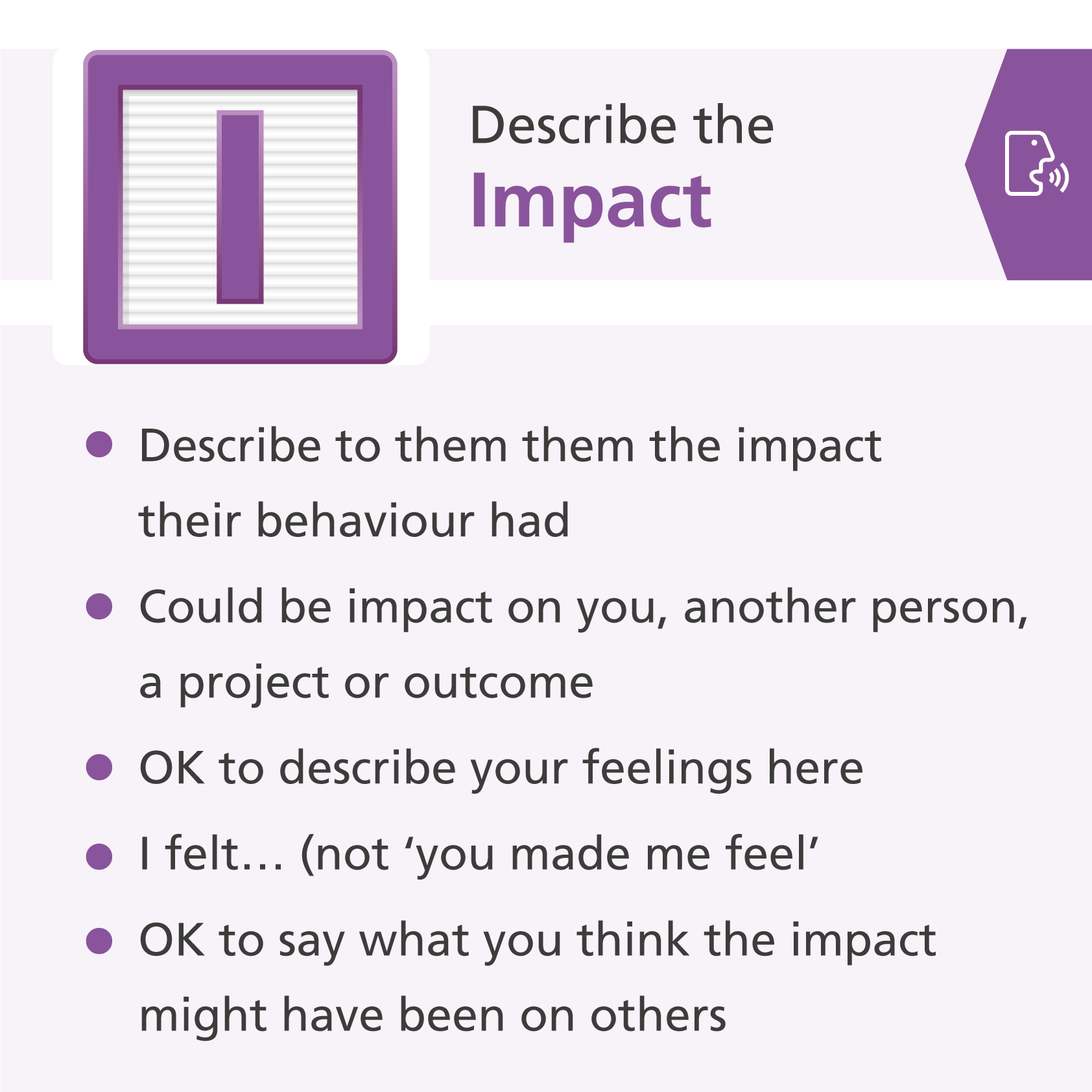
I. Impact
The impact may be personal to you or the impact on someone else, it may impact on the team or on the work. It can be direct or indirect.
How could we describe Simon’s impact? “Simon, I had to wash up your dishes before I could wash mine.”
It is OK at this point to talk about emotions or feelings.
If you are describing the impact on someone else. Be clear this is your perception. Whether or not it has had this impact doesn’t matter, this is still true for you.
“Simon, I think Claire was upset, because she had to tidy it up.”
Remember, we are only aware of c. 20% of how we come across to others. Don’t ask what impact they think they had. They won’t know.
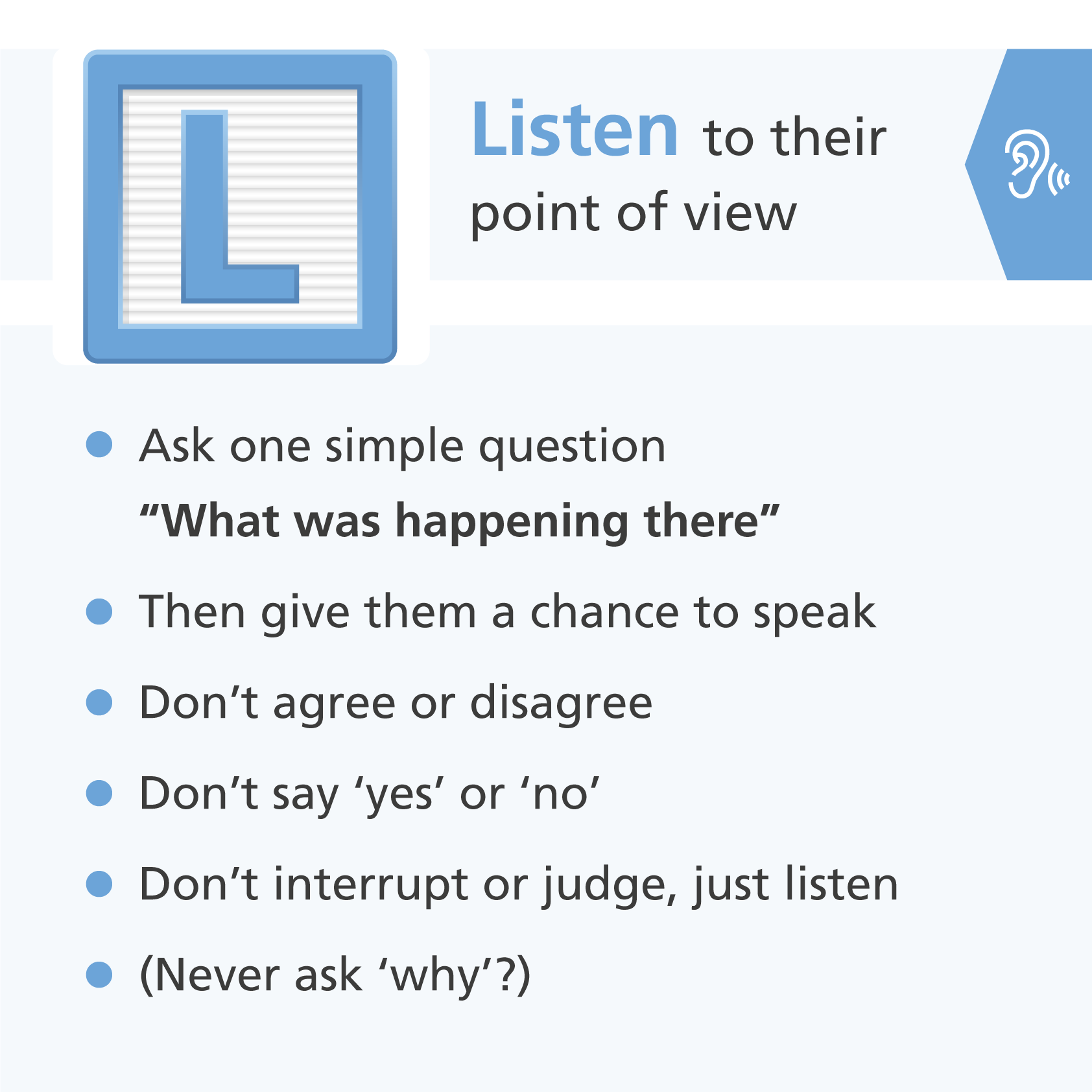
L. Listen
Simply ask “What was happening there?”
This question is carefully written to be free of judgment. It lets the other person voice their perspective.
Asking questions like “what was going on” or even “what was happening for you” implies judgment and may lead to a defensive response.
Listen to their response without talking for a moment. Don’t agree or disagree. Don’t say ‘yes’ or ‘no’. Just listen. It will help them to feel heard and respected. So they are more likely to act on your feedback.
Resist the urge to ask “Why?” Imagine the reaction if we ask “Why did you leave your dirty dishes?” Out come justifications and rationales. “Well you’ve done it, it’s only a few dishes, why are you so worked up?”
“Why?” is not a helpful question.
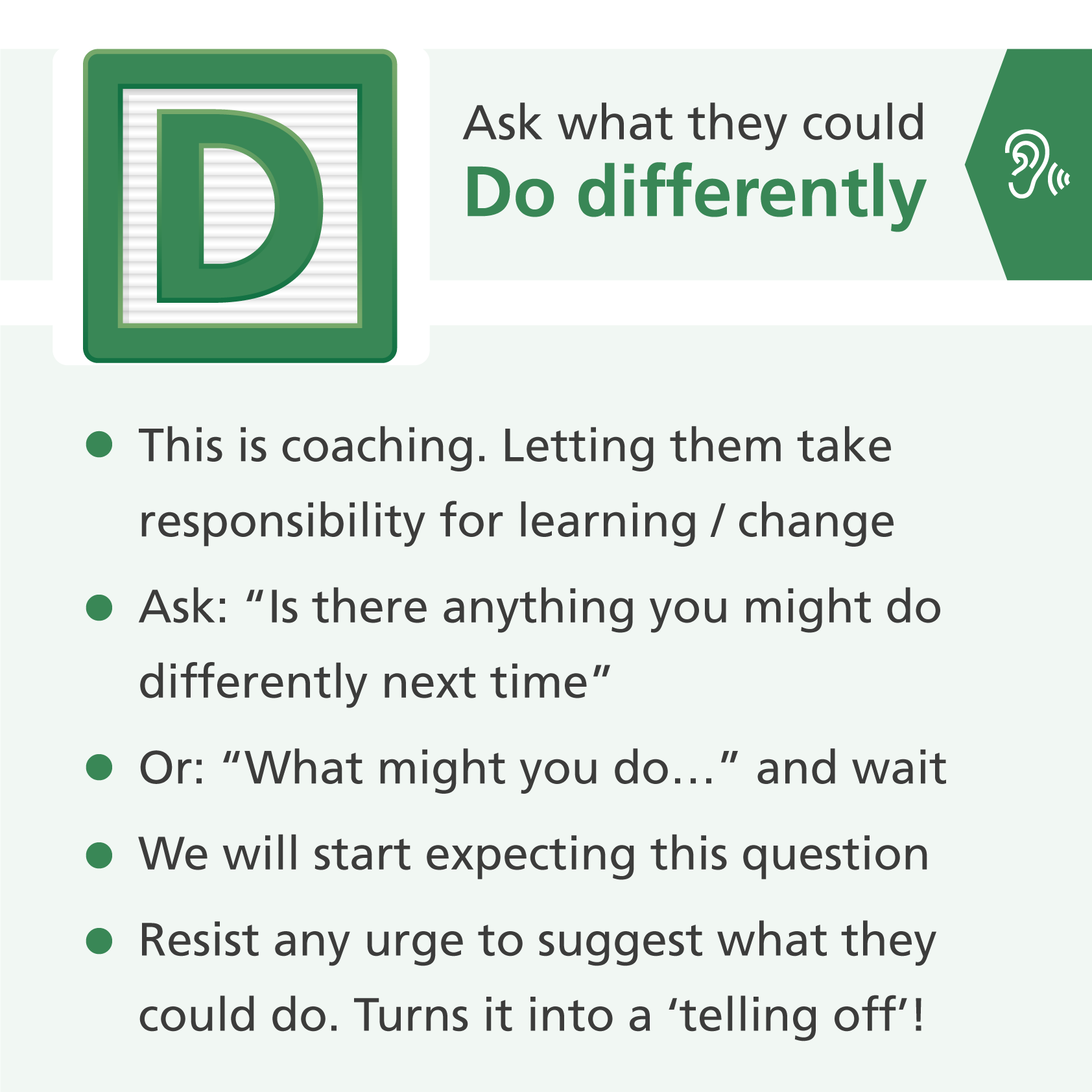
D. Do differently
Ask “what would you do differently next time?”
This is coaching. It gives them the chance to come up with their own idea about what they might do. They are more likely to act on their own idea.
There is flexibility in this question. Ask in a way that’s comfortable for you. You could ask ‘What could we do differently?’ but, if they suggest a change you can make, accept that then ask ‘and what could you do?’
Often we hear actions that we don’t expect, but that will work for them. “Simon – what might you do differently?”
We expect Simon to talk about washing up sooner but: “You know I never have time to wash up, maybe I’ll bring sandwiches from now on then I don’t have to bother.”
DON’T tell them what you think they should do, as however well-meant this transforms it into a ‘telling off’.